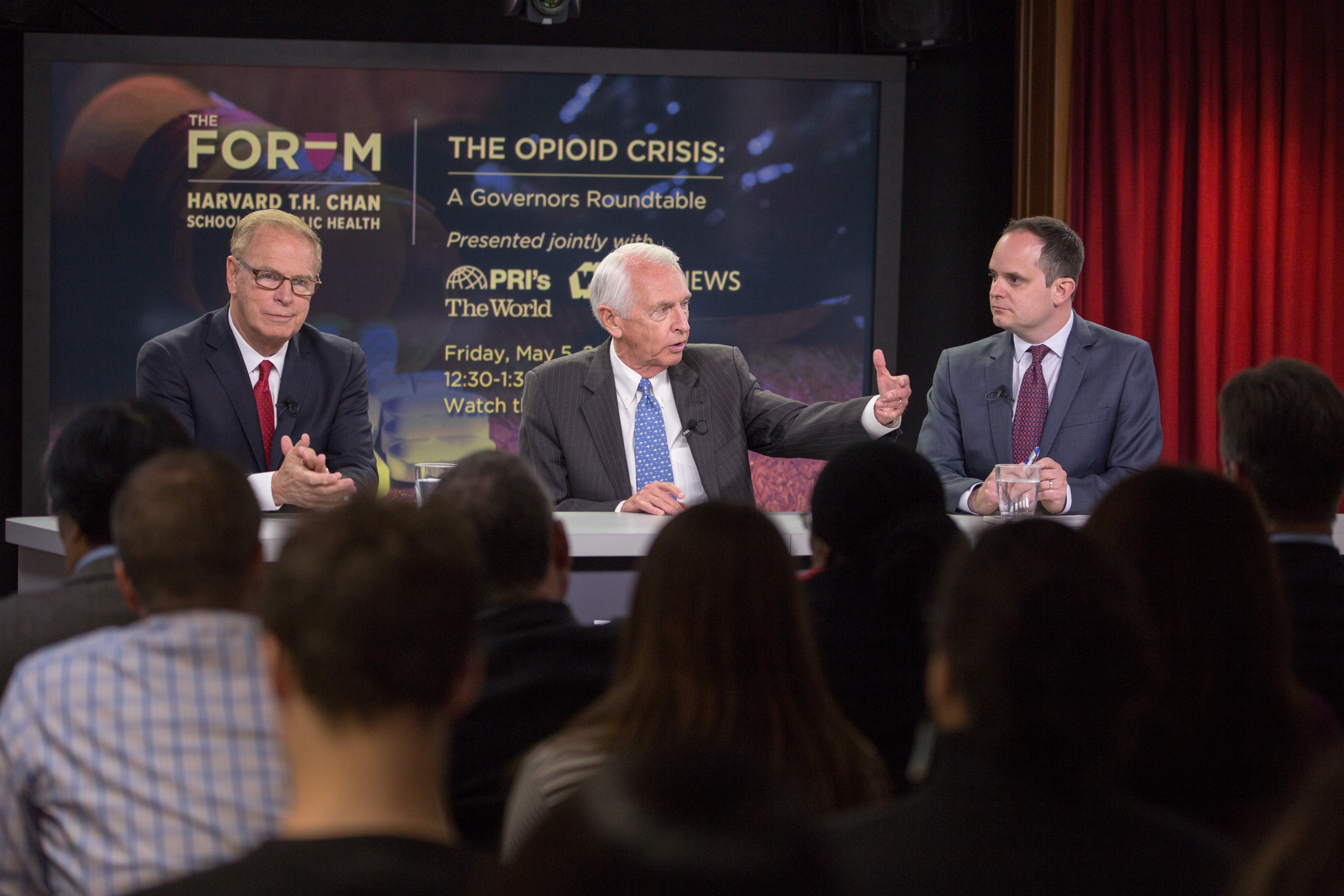
Steven Beshear has described his home state, Kentucky, as “one of the ground zeros” for the nationwide opioid crisis. His response sets a standard for the rest of the country. Active in politics since 1973, Beshear served as the 61st governor of Kentucky from 2007 to 2015. In that position, he expanded the Medicaid program under the Affordable Care Act and launched the Kentucky Health Benefit Exchange (Kynect). Together, these actions cut the state’s uninsured rate from 20.4 percent to 7.5 percent. But during the same period, Kentucky saw an explosion of prescription drug and opioid abuse.
Beshear, a 2017 Richard L. and Ronay A. Menschel Senior Leadership Fellow at the Harvard Chan School, spoke recently with Madeline Drexler, editor of Harvard Public Health.
Q: You have said that tackling substance abuse and opioid addiction cannot be achieved without the federal government’s participation. Why not?
A: Because we cannot arrest our way out of this crisis—we have to treat our way out of it. And states simply don’t have the financial resources needed to invest in treatment.
Q: Treatment for substance abuse is actually one of the rare areas of bipartisan agreement in Congress. Yet even on this issue, there has not been much progress.
A: Our federal legislative process is broken. The rank partisanship and gridlock that exists in Washington is eroding our democracy. But an issue like the opioid crisis should be bigger than party politics.
Unlike Washington, D.C., Kentucky was one of the few places left in the country where democracy still worked. After the 2011 elections, the first issue that I brought the two sides together on was the prescription drug abuse crisis, which started rearing its ugly head in Kentucky in 2010 and 2011.
Q: What policies were most effective in stemming the crisis?
A: We required all prescribers to use the electronic prescription monitoring system, which cut way down on doctor shopping—patients obtaining drug prescriptions from multiple providers and filling them at multiple pharmacies. We strengthened our licensing boards for all prescribers and required them to be very aggressive in going after licensees that were abusing their prescription privileges. We passed strict legislation about who could own pain clinics and essentially drove the pill mills out of the state. We created voluntary drug disposal sites in each of our counties. We increased our educational efforts—for prescribers, for students, and in our communities—to help people understand better what effects these pills were having on people. And we invested more in treatment.
Q: What were the results?
A: Prescribing of oxycodone plummeted. The main reason we knew we were being successful, unfortunately, was the arrival of heroin and fentanyl on the scene. It was an issue of access. When people are addicted to these drugs and pills are no longer accessible, they look for something else. The criminal element very quickly saw an opening.
Q: How did you go about tackling the street drug problem, which is far more complicated?
A: Once again, we engaged in a bipartisan effort. In 2015, we passed a Good Samaritan law, which allows a user who may be in the presence of another user who overdoses to call 911 without fear of being prosecuted themselves for being a user. That law saves lives—no question about it. We expanded the use and access to naloxone, which reverses the effects of an overdose, and we got that into the hands of all the first responders. We cracked down on traffickers and increased penalties. While it was not mandatory statewide, we allowed any locality to establish a needle exchange. And we invested even more in treatment.
“We cannot arrest our way out of this crisis— we have to treat our way out of it.”
—Steven Beshear, former Kentucky governor and Menschel Senior Leadership Fellow
Q: Still, overdose deaths continue to rise in Kentucky. What would it take to truly solve this problem?
A: In my opinion, we need a Manhattan Project to stop the opioid epidemic, an all-hands-on-deck approach out of the federal government, working in cooperation with all 50 states, both for treatment and for attacking the flow of fentanyl and heroin into our country.
Q: How would you sell that idea to lawmakers?
A: I’d say that this is a problem that affects every family, from the wealthiest to the poorest, the most educated to the uneducated. It affects every race and gender and population in our country.
Governors really understand this issue, because they are a lot closer to the people than federal lawmakers. Part of that is simply physical distance. But most of it is the fact that you’re here every day. And if you’re doing your job, you’re out in the different communities, and you have very personal interactions with people.
In Kentucky, the thing that finally persuaded us to come together on this issue was when our colleagues went home and people would walk up to them in the grocery store and say, “What are you all going to do about this problem?” “My son just died from an overdose.” “My daughter is addicted.” “My brother is in jail.” Our state representatives and senators came back and said, “We’re ready. We see what the issue is and we’re going to do something about it.”







